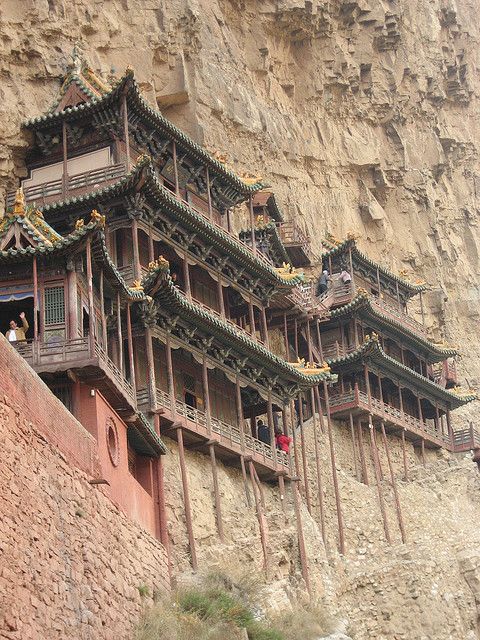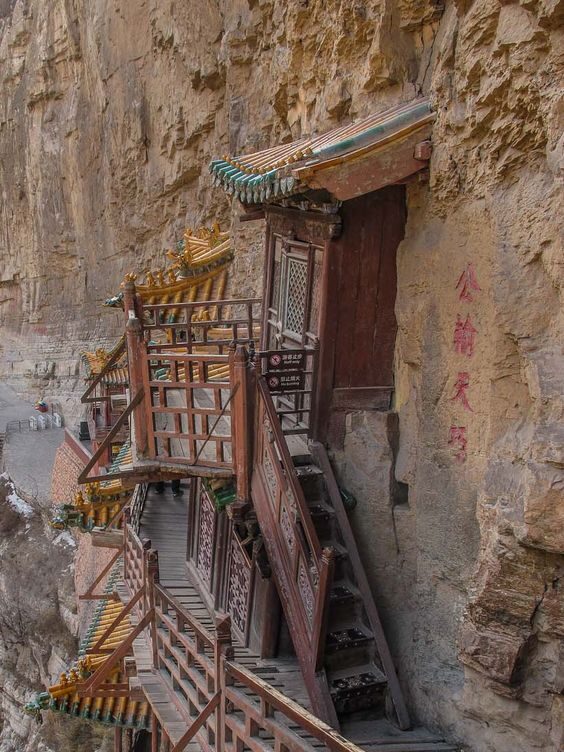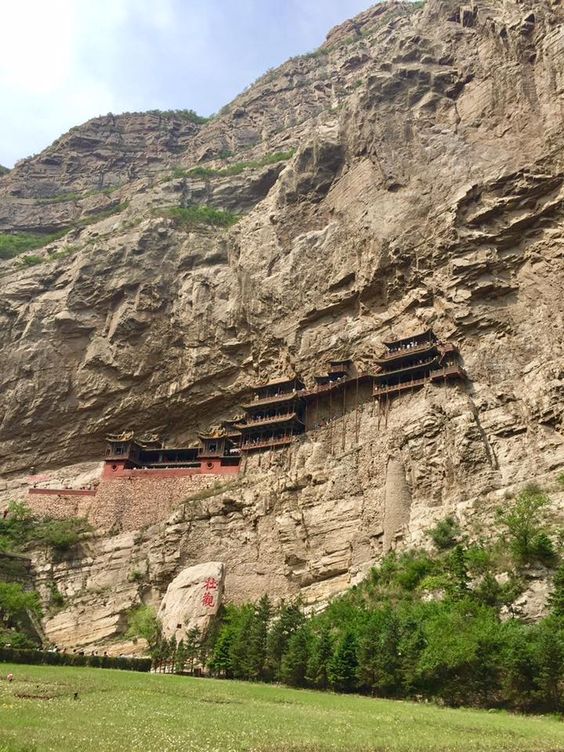The Hanging Temple, also known as the Xuankong Monastery, is situated on the side of a cliff in Shanxi Province, China. Built more than 1500 years ago, it has attracted international attention due to its design, intricate structure, and mystery that surrounds its origins.

The temple is a three-story wooden structure supported by wooden pillars embedded into the cliff and secured with hidden nails. The entire temple appears to hang precariously over the valley below, hence its name. The three levels of the temple are dedicated to three different Chinese religions; Buddhism, Taoism, and Confucianism.

Despite being an engineering feat and an architectural masterpiece, the Hanging Temple’s origins and motivation behind its construction are shrouded in mystery. The temple’s builder is unknown, and it’s unclear why it was built in such a precarious and dangerous location. Some theories suggest that it was built by spiritual hermits who wanted to escape from worldly possessions and distractions. Others suggest that it was built to provide a sanctuary during times of war, when conventional temples were likely to be destroyed.

Whatever the reason for its construction, the Hanging Temple is a testament to the creativity, ingenuity, and craftsmanship of ancient Chinese civilization. The temple’s wooden structure, building techniques, and support system have stood the test of time and survived natural disasters such as earthquakes, floods, and typhoons.

As a world-famous tourist attraction, the Hanging Temple is visited by millions of people every year. Visitors climb up a narrow, winding staircase through the temple’s three levels, marveling at the temple’s design and taking in the spectacular views of the valley below. The temple has undergone several renovations and restorations over the years, but its original design and structure have been preserved.

